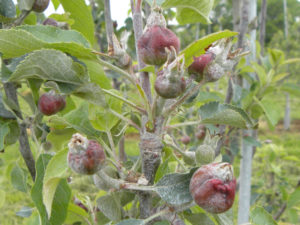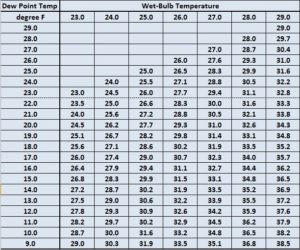(Trenton) [On April 20, w]ith the state expected to experience cooler spring temperatures, the Department of Environmental Protection has agreed with NJDA Secretary Ed Wengryn’s request to allow farmers to do controlled open burning or use specialized torches known as smudge pots to protect flowering crops from damage beginning today, April 20, through Saturday, April 27.
Temperatures are expected to drop to the 30s or below tonight with varying winds through portions of the state. These expected temperatures follow warm temperatures in recent days. Damage from freezing weather now can significantly reduce yields of certain fruits and vegetables that are in the flowering stage.
The DEP and Department of Agriculture are allowing these steps to protect farmers’ livelihoods and to ensure that consumers will be able to enjoy an ample supply of Jersey produce later this year.
The DEP intends to exercise its authority and discretion under the Air Pollution Control Code, N.J.A.C. 7:27, et seq., and other applicable authorities to permit the following procedure for open burning or the use of smudge pots to assist farmers to protect their crops in low temperatures.
Farmers who believe they will need to conduct open burns and/or use smudge pots must provide notice to the DEP’s 24-hour Communications Center at 1-877- WARNDEP (1-877-927-6337).
Notification to DEP does not require the implementation of either technique but ensures proper procedures are followed should they become necessary.
If a farmer does not call DEP in advance but uses either technique, the farmer must notify DEP by 9 a.m. the following day. The farmer will be asked which technique was used.
Farmers must record the incident number provided to them by the Communications Center. The following information is to be provided:
- Name of the individual making the decision to conduct the open burning/use of smudge pots and name of the farm.
- Actual street address of the farm on which either technique will be used (no P.O. Boxes).
- Telephone number of a contact at the farm.
- Predicted temperature (in degrees Fahrenheit) at the agricultural operation when the technique will be used.
- Wind speed anticipated when the technique will be used.
- Predicted hours of open burning and/or use of smudge pots.
- Materials expected to be burned.
- At the time of the initial call to the Communications Center, farmers will be given an email address and incident number.
Within two days, they must submit to DEP via this email address the following information:
- The DEP Communications Center incident number.
- Ambient temperature (in degrees Fahrenheit) at the time the technique was used.
- Actual wind speed at the orchard at the time the technique was used.
- A statement verifying that all restrictions in the open burning or use of smudge pots were followed.
- The New Jersey Department of Environmental Protection and New Jersey Forest Fire Service caution all farmers and agriculture businesses with respect to the use of open burning in high wind velocity conditions. Please take note that farmers are encouraged to utilize smudge pots for warming as necessary during higher wind conditions. Use of open burning when wind velocity is greater than 5 mph is strictly prohibited, may contribute to wildfire risk, and can carry significant penalties.
- Smudge pots must be fueled only with either kerosene or No. 2 fuel oil.
- Open burning can consist only of either the following materials: clean and untreated scrap lumber, felled trees, clippings pruned from trees and shrubs, hedgerows, or firewood. Absolutely no refuse, trade waste, tires or garbage of any type may be added to the authorized open burning material.
The New Jersey Department of Environmental Protection and New Jersey Forest Fire Service caution all farmers and agriculture businesses with respect to the use of open burning in high wind velocity conditions. Please take note that farmers are encouraged to utilize smudge pots for warming as necessary during higher wind conditions. Use of open burning when wind velocity is greater than 5 mph is strictly prohibited, may contribute to wildfire risk, and can carry significant penalties.
###
To learn more about the New Jersey Department of Agriculture, find us on Facebook at www.facebook.com/NJDeptofAgriculture and www.facebook.com/JerseyFreshOfficial or Twitter @NJDA1 and @JerseyFreshNJDA.


